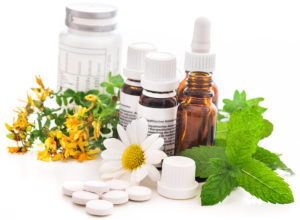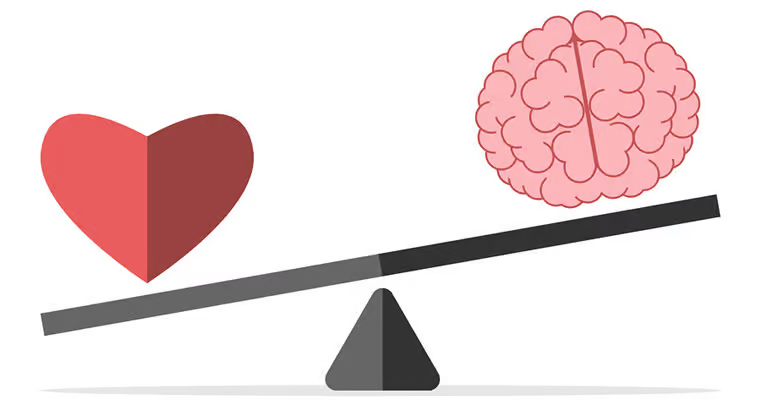Table of Contents
Key Takeaways
- Utilizing Ashwagandha can aid in stress resistance and potentially improve cognitive functions.
- Bacopa Monnieri is notable for its memory-enhancing properties, making it a useful addition to a daily regimen.
- Ginkgo Biloba can be employed to boost focus and cognitive speed, offering a natural solution for better productivity.
- Rhodiola Rosea is known for reducing mental fatigue, providing an option for maintaining mental clarity during long working hours.
- Turmeric offers anti-inflammatory benefits, which can be leveraged to promote overall brain health.
The word “nootropic” may be new. Coined by Dr. Corneliu Giurgea back in 1972.[i]
But humans have been using nootropic herbs and medicinal plants since before recorded history.
Nootropic herbs are some of the most potent natural mood and cognitive performance enhancers we have available today. Often shown to be as effective and safer than modern pharmaceuticals with a similar mechanism of action.
New scientific studies are now validating the cognitive benefits associated with traditional nootropic herbs. And modern manufacturing methods make these botanicals safer, purer, and more effective than ever before.
In this post you’ll be introduced to the top 15 nootropic herbs that can be used as stand-alone supplements. And several are included in some the best pre-formulated nootropic stacks available today.
What are Nootropic Herbs for Better Brain Function?
Nootropic herbs are naturally growing plants, or parts of plants including roots, stems, leaves, flowers and seeds. That are used for their brain-enhancing qualities.
Each of the nootropic herbs investigated in this post have a long history of traditional use in herbal medicine. Used for millennia by ordinary people as well as medical professionals.
It’s only in the last hundred years that science has shown us how these herbs work in our body and brain. Validating what people have known through practical experience in using these herbs.
A Brief History of Nootropic Herbs
Humans have been using plants for food and medicine for thousands of years.
Emperor Shen-Nung, the 2nd of China’s emperors (3500-2600 BC) catalogued over 365 species of medicinal plants. Many of which are still used in ayurvedic medicine, and traditional Chinese medicine today.[ii]
The ancient Greeks and Romans were also into herbs. Surgeons with the Roman army spread their herbal expertise throughout the Roman empire including Spain, Germany, France, and England.
Dioscorides (40 – 90 BC) and Galen (131 – 203 AD), both Greek surgeons in the Roman army wrote herbal books that remained the definitive materia medica texts for 1,500 years.[iii]
In 1597, John Gerard (1545 – 1612) who was the superintendent of the gardens of Queen Elizabeth incorporated New World plants in his Herball, or Generall Historie of Plants.[iv]
Our ancestors long ago learned that certain herbs could have a profound effect on healing and optimizing the human brain and body.
Modern Nootropic Herbal Science
Our ancestors used nootropic herbs in their most basic form; dried, raw, as a powder or steeped as a tea. And while effective, ancient herbal medicines were not that consistent in their brain-enhancing activity.
 Modern manufacturing methods have advanced to the stage where we know a specific nootropic herb will provide predicable, consistent benefits from batch to batch.
Modern manufacturing methods have advanced to the stage where we know a specific nootropic herb will provide predicable, consistent benefits from batch to batch.
And some extracts that can only be produced with modern lab techniques can amplify nootropic cognitive activity for more specific benefits.
The latest manufacturing techniques for nootropic herbs include:
- Standardized extracts – provide an exact level of a plant’s active nootropic compounds in each serving
- Concentration – distilled into highly potent herbal extracts resulting in smaller quantities offering cognitive enhancement activity
- Calibration – precisely measured botanical extracts are made to supply more specific nootropic compounds shown to benefit your brain
Not only does modern lab and manufacturing techniques provide more effective nootropic herbs. Safety is also enhanced because unwanted compounds or toxins can be prevented from entering your nootropic supplement.
Next you’ll get a summarized introduction to 15 of the most effective nootropic herbs known to man. Most with thousand-year track records in cognitive-enhancing performance.
Each summary provides a live link to my full review of that nootropic herb. Providing a deeper dive into what it is, where it comes from, why we use it, recommended dosages, side effects and type or form of each botanical to buy as a nootropic supplement. With links to dozens of randomized, placebo controlled clinical studies supporting each nootropic.
Ashwagandha
In Sanskrit, Ashwagandha means “smell of horse”. Meaning this herb imparts the strength and vigor of a stallion.
One of the most powerful nootropic herbs in Ayurvedic medicine, Ashwagandha stands shoulder to shoulder with some of the most potent drugs used to treat anxiety and depression.
Ashwagandha helps reduce cortisol, lowers blood sugar, and improves blood pressure.[v] It helps regenerate axons, dendrites and synapses. Restoring neural networks, this nootropic herb boosts memory and learning.[vi]
And Ashwagandha extract inhibits acetylcholinesterase. The enzyme responsible for breaking down the key neurotransmitter acetylcholine.[vii] Which in turn helps increase cognition, learning and memory.
Bacopa Monnieri
Bacopa Monnieri, also known as water hyssop, is often referred to as “Brahmi”. Named after the supreme god Brahma.
In ancient Ayurvedic texts, Bacopa was recommended to devotees to help them memorize long passages of text.
The bacosides A and B in Bacopa help rebuild damaged neurons and improves electrical signaling in your brain. Boosting attention, memory, recall, and focus.[viii]
And studies show Bacopa as effective as the benzodiazepine lorazepam for anxiety. Without the benzo side effect of memory loss.[ix]
CBD Oil
Cannabidiol (CBD) is one of over 120 phytocannabinoids that have been isolated so far from Cannabis sativa L.[x] The other major phytocannabinoid is THC (Δ9-tetrahydrocannabinol).
CBD has been shown in the lab and through practical user experience to provide anti-anxiety and antidepressant effects.[xi] Reducing anxiety in those with social anxiety disorder. And as an antidepressant by enhancing serotonin and glutamate signaling via the 5-HT1A sub-receptor.
CBD has gained widespread attention for treating seizure disorders like epilepsy. CBD lowers excitation in brain cells that contribute to seizures. CBD also enhances GABA which helps prevent seizures.[xii]
And its anti-psychotic effects are related to its effect on increasing levels of anandamide.[xiii]
Ginkgo Biloba
Ginkgo Biloba is one of the oldest species of trees on earth. Some Ginkgo trees in China are thought to be over 2,500 years old.[xiv]
In fact, four Ginkgo trees survived the atomic explosion over Hiroshima. Only 1,130 meters from the bomb’s epicenter.
In the oldest ayurvedic medicine text called the Chinese Materia Medica (2800 B.C.), Ginkgo biloba was recommended for asthma, swelling of the hands and feet, coughs, vascular disorders, aging and for the brain.[xv]
Ginkgo acts as a monoamine oxidase inhibitor (MAOI) which reduces levels of monoamine oxidase (MAO) in your brain. Which in turn boosts dopamine which can help boost mental performance, reduce anxiety, depression and assist in the symptoms of ADHD.[xvi]
Ginkgo also helps increase cerebral blood flow. Better cerebral blood flow helps with improving oxygen and glucose availability to neurons for neuronal health. Boosting memory, recall, cognition and learning.[xvii]
Ginseng
The name “ginseng” as a nootropic usually refers to either American ginseng (Panax quinquefolius), or Asian ginseng (Panax ginseng). Panax means “cure-all” in Greek.
Ginseng works as an adaptogen, reducing adrenal fatigue, boosting GABA and providing an anti-stress effect.[xviii]
Ginseng provides neuro-protective effects on the dopaminergic-pathway. And ginseng is a serotonin and norepinephrine reuptake inhibitor (SNRI). Working as an antidepressant and helping some symptoms of ADHD.[xix]
Ginseng also works as an anti-inflammatory by reducing cytokines, and as an antioxidant. Boosting ATP synthesis in mitochondria due to its antioxidant effects. Improving physical and mental energy.[xx]
Gotu Kola
Gotu Kola (Centella asiatica) is often called “the student herb” in Bali. Because it sharpens the mind. Gotu Kola extract increases dendrite and axon growth in brain cells which helps memory.
As a nootropic herb, Gotu Kola stimulates the growth of brain cells. It encourages dendrite branching which boosts brain plasticity and communication between neurons.[xxi]
Gotu Kola protects your brain from toxins and oxidative stress. Studies show it helps protect against heavy metals and food additives which cause brain fog, mood swings and migraines. And it reduces oxidative stress by reducing free radicals in brain cells.
And Gotu Kola helps prevent the breakdown of acetylcholine. Enhancing mood, cognition, memory and learning. And preventing degenerative brain diseases like Alzheimer’s.[xxii]
Holy Basil
Holy Basil (Tulsi) or “The Incomparable One” is the most sacred nootropic herb in the Hindu religion. And has been valued for millennia by Ayurveda, Greek, Roman, Siddha and Unani medicine because of its benefits for mind, body and spirit.
 Holy Basil is a monoamine oxidase inhibitor (MAOI) which boosts levels of dopamine in your brain. And inhibits acetylcholinesterase (AChE) which boosts acetylcholine. Affecting anxiety, depression, memory and faster thinking.[xxiii]
Holy Basil is a monoamine oxidase inhibitor (MAOI) which boosts levels of dopamine in your brain. And inhibits acetylcholinesterase (AChE) which boosts acetylcholine. Affecting anxiety, depression, memory and faster thinking.[xxiii]
Holy Basil reduces spikes in cortisol induced by chronic stress.[xxiv] And is particularly effective in protecting your brain from the negative effects caused by loud noise.[xxv]
Holy Basil shields your brain from heavy metals such as arsenic, cadmium, chromium and mercury. And from the toxic effects of radiation.[xxvi]
And several studies have shown Holy Basil to be as effective in treating anxiety and depression as Valium.[xxvii]
Lemon Balm
Lemon Balm (Melissa officinalis) is native to the Mediterranean region. And has been cultivated for well over 2,000 years.
It was used as a tea to combat mental confusion, and as an elixir to extend lifespan.
In the 17th century, French Carmelite nuns dispensed Carmelite Water. This lemon-balm infused ‘miracle water’ was said to improve memory, vision, and reduce fever, melancholy and congestion.
Lemon Balm inhibits acetylcholinesterase (AChE). AChE is an enzyme that breaks down acetylcholine (ACh). Increasing ACh boosts memory and cognition.[xxviii]
Lemon Balm also provides a significant anxiolytic (anti-anxiety) effect. It raises brain levels of the neurotransmitter GABA by inhibiting the enzyme GABA transaminase. This influences mood regulation.[xxix]
The rosmarinic acid in Lemon Balm promotes an anti-depressant effect in your brain by downregulating mitogen-activated protein kinase phosphatase-1 (Mkp-1). And it upregulates brain-derived neurotrophic factor (BDNF), along with boosting dopamine synthesis.[xxx]
L-Theanine
L-Theanine (r-glutamylethylamide) is a non-dietary amino acid found in green tea (camellia sinensis) and is similar to the neurotransmitters l-glutamate and l-glutamine.
L-Theanine boosts alpha brain waves promoting alert relaxation. And theta brain waves associated with creativity and relief from trauma.[xxxi]
L-Theanine boosts the neurotransmitters serotonin, dopamine and GABA in your brain. As well as increasing Brain-Derived Neurotrophic Factor (BDNF) and Nerve Growth Factor (NGF). With increased nerve growth factor and BDNF, it assists in relieving stress, improving cognition, boosting mood and quicker thinking.[xxxii]
And L-Theanine is an antagonist of NMDA receptors and can inhibit synaptic release of glutamate. Protecting your brain from over-stimulation caused by glutamate, and possible glutamate toxicity.
Maca
Native Peruvians (pre-Inca) have cultivated the nootropic herb Maca for at least 2,000 years. It is the only sustainable food crop that can grow in the harsh, cold conditions of the upper Andean plateau.
Maca is used as a sports supplement by strength and endurance athletes to improve trial performance. Likely due to better energy metabolism and improved antioxidant status.[xxxiii]
Natives in the central Peruvian Andes traditionally had their children eat Maca to improve their performance in school. Likely due to Maca’s ability to boost acetylcholine and act as an antioxidant.[xxxiv]
Studies have also revealed that Maca acts as a fatty acid amide hydrolase (FAAH) inhibitor. Which prevents the breakdown of anandamide and could explain why Maca boosts libido, regulates hormones, improves memory and acts as an antidepressant.[xxxv]
Rhodiola Rosea
Rhodiola Rosea is an adaptogenic nootropic herb that has been use in traditional medicine in Russia and Scandinavia for hundreds of years.
Rhodiola Rosea boosts mood by influencing serotonin and norepinephrine levels in your brain, and the feel-good opioids like beta-endorphins.[xxxvi]
Rhodiola Rosea helps in neurogenesis by repairing and growing new neurons. It also activates the synthesis and re-synthesis of ATP, your body and brain cell’s main energy source.
Rhodiola Rosea helps reduce the inflammatory C-reactive protein. And salidroside, one of many components of this incredible nootropic herb, protects neurons from oxidative stress-induced cell death.
Saffron
Saffron is the dried stigma of the Crocus sativus plant native to the Middle East. It is the world’s most expensive culinary spice and has also been used for thousands of years as an anxiolytic, sedative, and antidepressant.[xxxvii]
As a nootropic herb, Saffron is now used for depression, PMS symptoms, post-partum depression, memory, appetite suppression, energy & stamina in athletes, and preventing neurodegenerative diseases like Parkinson’s and Alzheimer’s.
Saffron extracts (crocin & safranal) inhibit the uptake of dopamine and norepinephrine in the brain which helps improve mood. And has been shown to be as effective as methylphenidate in treating the symptoms of ADHD.
Recent studies show Saffron as effective as some popular prescription antidepressants. And can even help alleviate the sexual dysfunction caused by these drugs.[xxxviii]
Crocin and safranal which are unique carotenoids in Saffron make it a potent antioxidant. Scavenging free radicals which reduces inflammation, preventing apoptosis, and protecting neurons and mitochondria.[xxxix]
Many neurohackers report an increase in energy and better libido with Saffron.
And the Saffron extract found in Performance Lab® Vision has become popular within the athletic world because it helps improve vision. And reduces light flicker sensitivity from bright and flashing lights.
Turmeric
Turmeric (Curcuma longa) is one of the most studied nootropic herbs and cognitive enhancers in Ayurvedic, Siddha, Unani and Chinese medicine.[xl]
Turmeric has remarkable nootropic properties. And stands far above many modern medicines used to treat neurodegenerative diseases like depression, Alzheimer’s and stroke.
Several studies have shown that turmeric or its active component curcumin significantly boosts BDNF. Research also shows that the curcumin in turmeric boosts neurogenesis. The production of new neurons in your hippocampus is essential for optimal brain health, learning, memory and mood.[xli]
The curcumin in turmeric boosts the feel-good neurotransmitters serotonin and dopamine. These neurotransmitters are critical for mood, cognition, libido and focus.
Curcumin functions very much like antidepressant MAOI’s and SSRI’s used to treat depression and Alzheimer’s Disease. And can actually enhance the effect of antidepressants like Prozac and Effexor.[xlii]
And the curcumin in turmeric is a potent antioxidant which helps protect your brain from inflammation. Chronic inflammation has been linked to depression and dementia.[xliii]
Vinpocetine
Vinpocetine is a semi-synthetic derivative of vincamine, an alkaloid-derived from and occurs naturally in the lesser periwinkle plant (Vinca Minor L.). And one of my favorite nootropic supplements.
Vinpocetine inhibits an enzyme called PDE1 (phosphodiesterase type 1) while reducing calcium levels in brain cells. Increasing cerebral blood flow especially in the thalamus, basal ganglia and visual cortex regions of the brain.[xliv]
And Vinpocetine is an anti-inflammatory. It prevents the upregulation of NFκB (nuclear factor kappa-light-chain-enhancer of activated B cells) by TNFα (tumor necrosis factor alpha).
This anti-inflammatory action shows such promise that scientists are now working on trying to determine if Vinpocetine can reduce inflammation in the brain. And help protect the brain from developing Parkinson’s or Alzheimer’s.[xlv]
Vinpocetine’s effect on short-, working- and long-term memory can be profound. Remembering names, numbers and life events becomes easier.
Valerian
Valerian (Valeriana officinalis) is native to Europe and Northern Asia and has been used for millennia as a sleep aid.
Valerian helps eliminate stress by boosting GABA, serotonin, activating adenosine receptors, and reducing the stress hormone cortisol.
Valerian extract helps relieve anxiety. The valerenic acid and valerenol in Valerian binds to GABAA receptors which provides its anxiolytic effect and relief from chronic stress.
Like the prescription drugs Xanax and Valium but without the side effects associated with these pharmaceuticals.[xlvi]
The Promising Future of Nootropic Herbs
With the invention of the printing press in the mid-15th century, the herbal books of Dioscorides, Galen, and Avicenna were mass-produced. And ordinary people outside the palace, the monastery, and the university could now access the healing power of herbs.
Then as now, the use of nootropic herbs require no specialized skills.
With some research here on Nootropics Expert®, and deciding what you’d like to heal or optimize, select two or three nootropics mentioned in this post.
If one doesn’t provide the benefit you’re looking for, then try another until you see which have the best memory and cognitive function benefits for you. Why settle for cognitive impairment when simply a little experimenting can turn your life around?
Nootropic herbs are generally non-toxic and safe when used in recommended dosages. So you can only benefit by trying them.
Or you can try a high-quality pre-formulated nootropic stack like Mind Lab Pro® that includes effective dosages of Bacopa Monnieri, L-Theanine, Rhodiola Rosea, and Pine Bark Extract.
If you decide to try individual nootropic herbs, then please see my post, “7 Tips for Choosing the Highest Quality Nootropic Supplements”. And ensure you are selecting the best quality natural nootropics available.
You too can heal and optimize your brain with nootropic herbs. And have safer and more effective options than your ancestors ever had.









Join The Discussion - 11 comments
Salem
April 8, 2024
hello David, Istruggle a lot with sleeping like becuase of the stress and too much thinking sometime depression
did there is any recommended herbs that can improve that
David Tomen
April 10, 2024
Salem, I cannot suggest anything without know a lot more about you and what your are dealing with. I suggest scheduling a consultation with me (https://calendly.com/d/5c4-wg7-qzn) or start experimenting with supplements until you find something that works.
Ivan Sanabria
June 1, 2022
I just put together an ayurvedic nootropics stack = Shilajit, Mucuna, Bacopa and Rhodiola. I know Mucuna and Rhodiola atart working quite fast., and i should cycle them. Bacopa and Shilajit take a few weeks to kick in. Aside from that it’s been only a few days, so too early for an accurate read on the results, no side efects though. David what are your thoughts on these elements , particularly Shilajit and Mucuna, since you don’t mention either one on this article?
David Tomen
June 4, 2022
Ivan I have not done my research on Shilajit yet so cannot help you with it. But here is my review for Mucuna Pruriens (https://nootropicsexpert.com/l-dopa/)
Daiva
January 29, 2022
Thank you so much, very useful info. Which of them would you recommend for somebody coming off benzos for brain zaps, agitation, and other unpleasant symptoms? Are brain zaps a sign of neural connections healing? Interestingly he didn’t have zaps at the beginning, but now 4 months later, they are coming some days multiple times a hour. He is already on omega3s, primrose oil, magnesium, turmeric, feverfew, passion flower leaf, l-theanine, and a few other herbs and supplements. Actually it seems, that these things seem to have started the zaps, so we are hoping they are a sign of healing, even though not easy to go through.
David Tomen
January 31, 2022
Daiva, the mistake people make coming off of benzos is thinking they need to replace them with GABA or supplements that affect GABA. And that is the absolutely last thing you want to do.
Because benzos have desensitized GABA receptors. So introducing GABA causes problems because there is nothing for GABA to attach to. When you try that method you end up with some of the symptoms you describe. Stay away from any supplement that affects GABA.
Here are a couple of pages that I think may help:
https://www.benzoinfo.com/protracted-withdrawal-syndrome/
https://www.benzoinfo.com/medications-and-supplements/
Sam
April 4, 2021
There is another cool one called haritaki
David Tomen
April 5, 2021
Sam, Haritaki is another of countless herbs used in Ayurvedic medicine. But while it may be useful I don’t see any nootropic benefit to using it.
Lynn Gregory
August 16, 2019
I would like to talk to someone about supplementation for my 10 year old with spastic CP. She has some cognitive loss but overall is highly functioning. I want to improve cognition, muscle repair and neurogenesis.
Thank you!
David Tomen
August 16, 2019
Lynn, most of the research I came across for naturally treating spastic cerebral palsy are vitamins including C and D and minerals including magnesium and zinc. But I’m sure you’ve come across the same research yourself.
The only nootropics I can find specifically tested with some success in spastic CP are GABA and Piracetam. You’ll find a study for Piracetam here: https://www.scopemed.org/?mno=14500
kerino01
July 31, 2019
David – really great review. I’ve been slowly tipping my toe into adaptogens that also have nootropic benefits, and this is exactly the kind of info that I need. Just stopped by to say thank you for all your work.